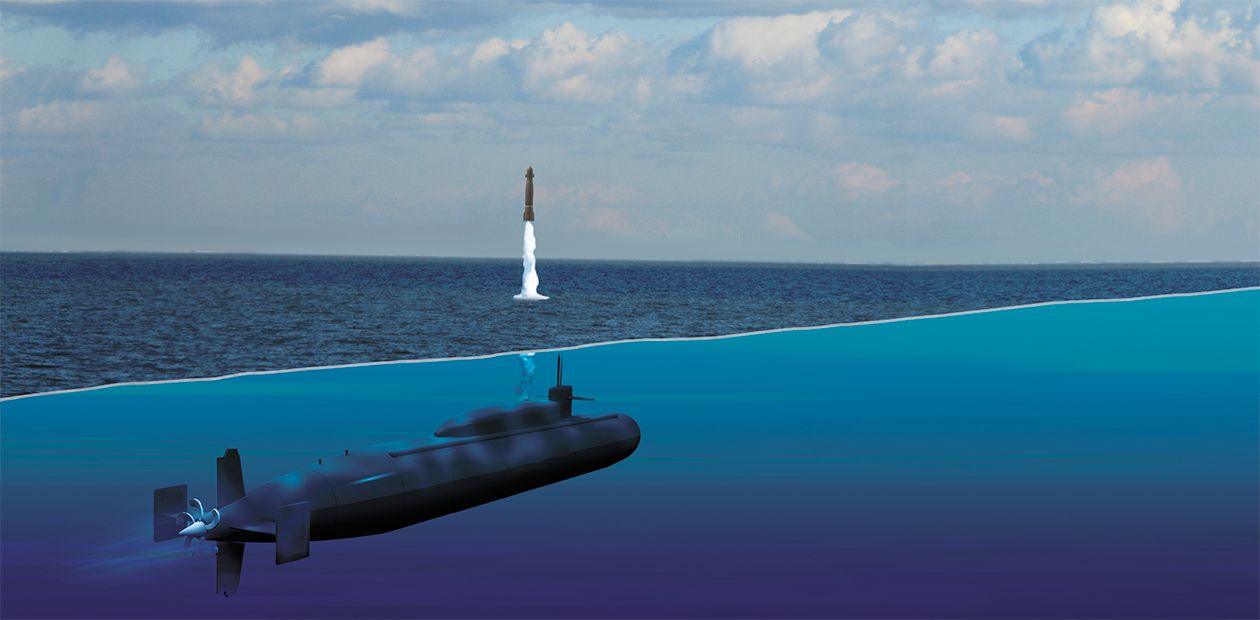Guaranteed Security
In the second half of the 20th century, strategic rocket armaments became a stable guarantee of the country’s security and a basis for its defense capability. The Federal Research and Production Center ALTAI was put into operation in the late 1950s with creating of a solid propellant for the first intercontinental ballistic rocket. Over the past 50 years, various methods for designing solid-propellant charges for land-and sea-based rockets as well as for estimating and controlling their usefulness and reliability have been developed here. In the Center, advanced high-energy materials have been produced and investigated; new industrial technologies and production units, which successfully operate at national enterprises, have been created
By the beginning of the Great Patriotic War, the USSR had developed various rocket powders. This increased the arsenal of the Red Army: it acquired legendary rocket launchers named Katyusha. Jet-propelled projectiles had end-burning grains that could burn for some time creating thrust in flight. It was a tactical rocket weapon. However, the nuclear threat that originated at the end of the war set new extremely complicated tasks for the Soviet scientists. It took them only a few years to overcome the country’s backwardness in nuclear armament and to create a strategic rocket weapon. The space launch of a satellite in 1957 demonstrated the level of rocket technologies in the USSR; at the same time our army got an intercontinental weapon that the USA had yet to develop: strategic liquid propellant rockets R-7.
Liquid propellant rockets were not very reliable, were difficult to operate, and had a limited time of operational readiness. Gradually the national rocket armament began to lag behind, while the USA was rapidly increasing the production of large solid propellant rocket engines (SPREs) for ballistic underwater and shaft rockets. The only way out for Russia was to develop, as quickly as possible, heavy rockets on home-made high-energy solid propellants which had yet to be created.
Solid and liquid propellant engines are widely used in heavy rockets. Both propellants have certain advantages and shortcomings. Therefore, choice usually depends on the purpose of the rockets.Solid propellant rockets are almost 100 % reliable and safe in exploitation; they have considerable thrust, and have been in readiness for a combat launch for several decades. On the other hand, liquid propellant rockets have considerable advantages over them since they can regulate the amount and direction of the jet thrust. For instance, the first strategic rocket that was adapted by the Soviet Army, R-7, worked on liquid propellant. It took about 12 hours to inject the propellant into the tanks, while the rocket stayed ready for a combat mission only for 24 hours, because the propellant started to evaporate. At the onset of the critical time, one had either to launch the rocket or pour out the toxic propellant, which was not easy in field conditions.
Unfortunately, many Russian submarines are still armed with liquid propellant rockets. Serious risks resulting from possible leakages while the submarines are at sea are a strong argument in favour of equipping the submarines solely with solid propellant rockets.
However, it is easier and cheaper to use liquid propellant for large space rockets if there is an efficient infrastructure of maintenance, launch, and exploitation. The entire preparation for the launch, including fueling, takes 2 or 3 days. This time is quite acceptable for space industry
In 1958, the government passed a resolution to create NII-9, known today as the Federal Research and Production Center ALTAI. The task of the center was to develop and produce versatile high-energy solid propellants and explosives. Major efforts of the Center’s researchers and specialists were focused on creating high-efficiency solid propellant charges for intercontinental ballistic rockets (IBRs). As early as 1967, the first solid propellant IBR with engines produced by the ALTAI Center was demonstrated at the Red Square Military Parade.
Rocket engines were tested not only on the NII-9 proving ground (the Federal Research and Production Center ALTAI), but also while launching land- and sea-based rockets from the Russia’s northern proving grounds in Plesetsk and Severodvinsk. Rocket heads were adopted in Kamchatka.The rocket flight path had to be calculated with high accuracy to make it easier to detect the hitting point. However, mistakes were inevitable. In this case, a group of analysts used a helicopter to detect the rocket fragments; the group followed the calculated flight path and used the data provided by a specially developed search system.
For full-scale tests, rockets were launched to the Pacific Ocean. The target was in neutral waters, not far from the Hawaii Islands. In this instance all interested parties were informed; in particular, messages were sent to ships with a warning about the forthcoming launch and a recommendation not to enter the dangerous region
Propellant and engine as a whole
In the 1950s, owing to new chemical technologies, there appeared a method for obtaining various mixed solid propellants based on mixing a combustible polymer material with the oxidizer crystals. The mixture, resembling viscous paste, then hardened. It became possible to cast large solid fuel cells in this way. Today, the weight of a cast can reach 100 tons.
When highly efficient intercontinental rockets are made, the mixed propellant should satisfy stringent requirements . The major criterion of the propellant efficiency is its energy intensity, i.e. when little propellant releases much energy. To decrease the total weight, rockets are constructed not from metal but from a high-strength and relatively light organoplastic material. Some propellant types have high-speed combustion (say, a ton burns down in a second); the rocket must be well protected against the action of extreme temperatures in the operating engine.
The mixed propellant is placed in and formed directly in the engine case, occupying its entire design volume. The propellant layer at the walls protects them against the adverse action of high temperatures practically during the entire period of the engine’s operation. This layer should be tightly stuck to the inner walls, otherwise, if it comes off, an additional surface will form inside the engine and it will distort the design operation of the engine.
Since the expansion coefficients of the propellant and of the case differ by an order of magnitude, one should take into account diurnal and seasonal differences in external temperatures that can lead to a rupture or unsticking of the propellant off the engine walls. Deoxidation of the crystalline oxidizer in the propellant is not allowed. All above-listed requirements must be followed for twenty years, which is the guaranteed time for the rocket being in operation.
Modern solid propellant rocket engines are unique mechanisms; they allow the rocket to accelerate to high speeds and maneuver in flight. They provide failure-free operation of various functional modules in order to carry out a common combat mission. People engaged in the creation of these extremely complicated rocket parts have always described their major task in very simple words: first and foremost, there must be no war. The cost of the Great Victory was too high!
References
Alinkin V. N., Milekhin Yu. M., Pak Z. P. Powders, propellants, charges. V. I. Methods of mathematical modeling to investigate solid propellant charges. M.: Khimiya, 2003. 216 p.
The Federal Research and Production Center ALTAI / Ed. by A. V. Litvinov // Priobskie vedomosti. 2008.
SolomonovYu. S. Nuclear vertical. Events and thoughts. M.: Publishing house Intervestnik, 2009.
Structural mechanisms of formatingf mechanical properties of granular polymer composites / Ed. by V. V. Moshev. Yekaterinburg, 1997.






